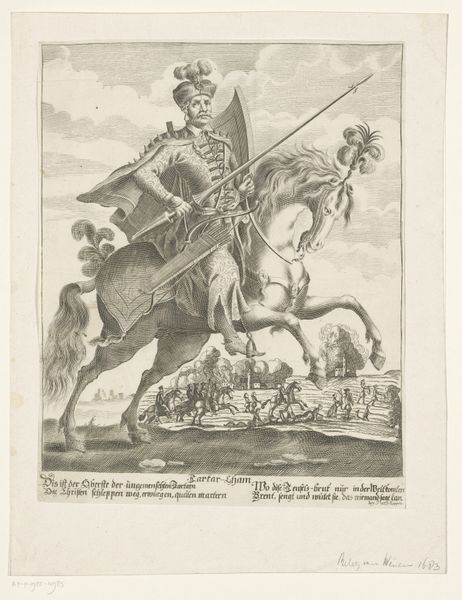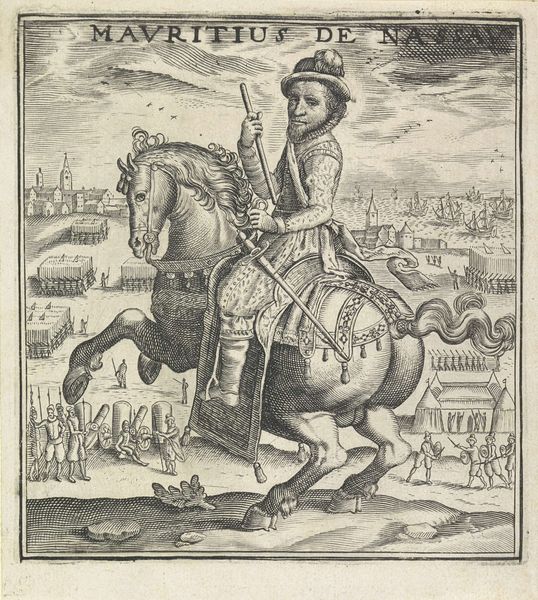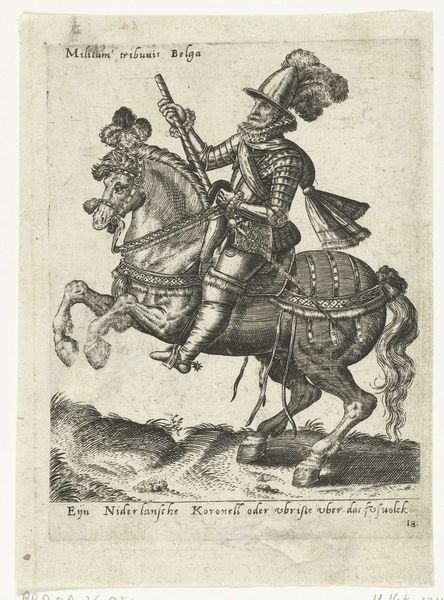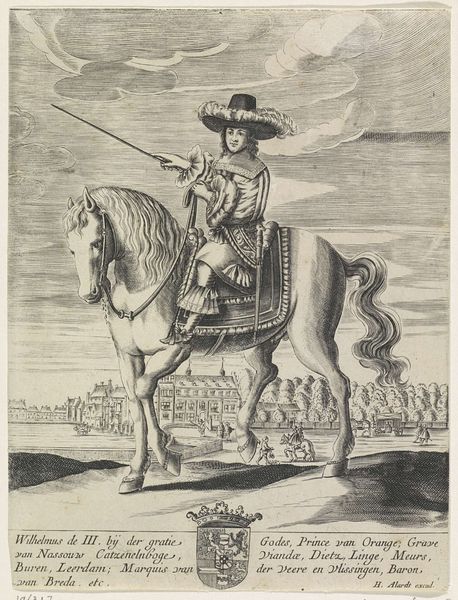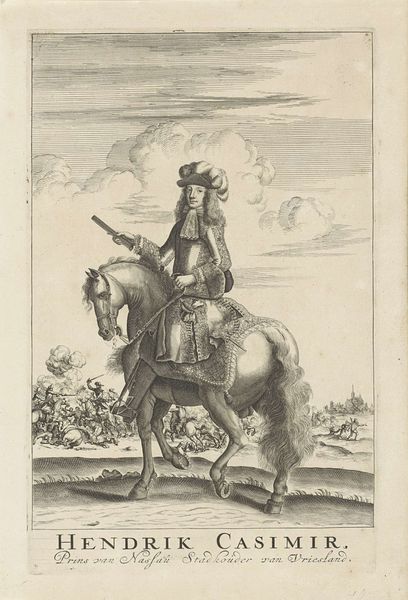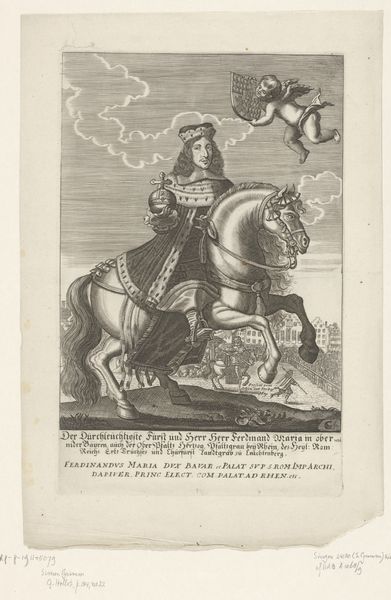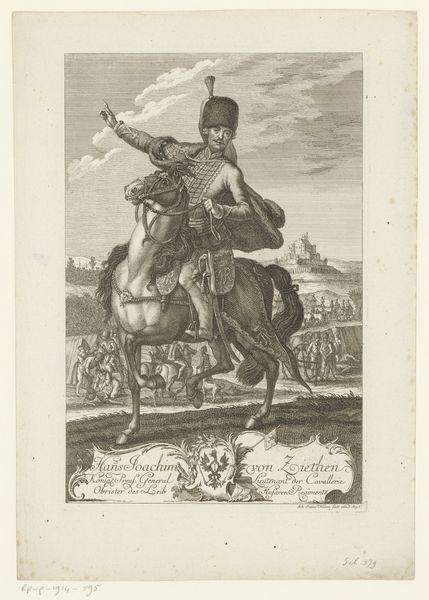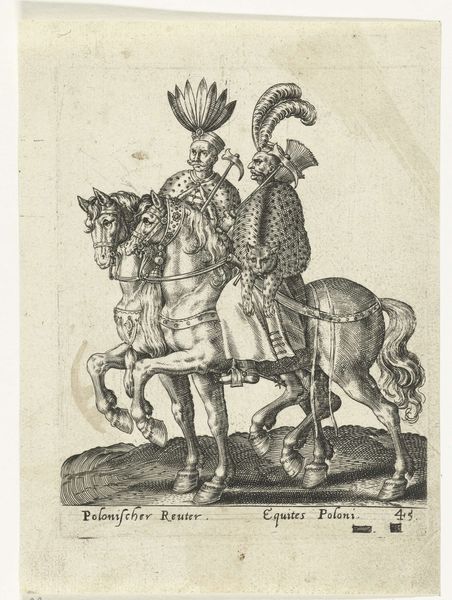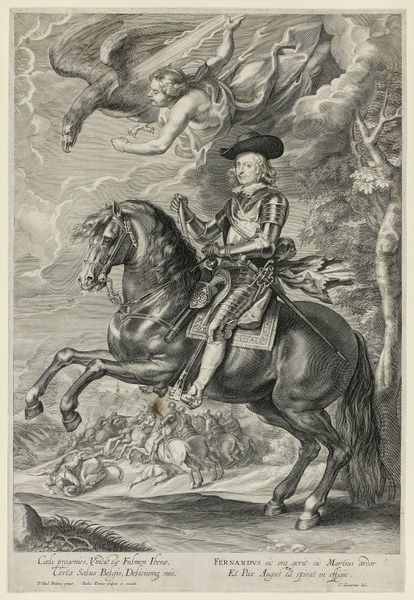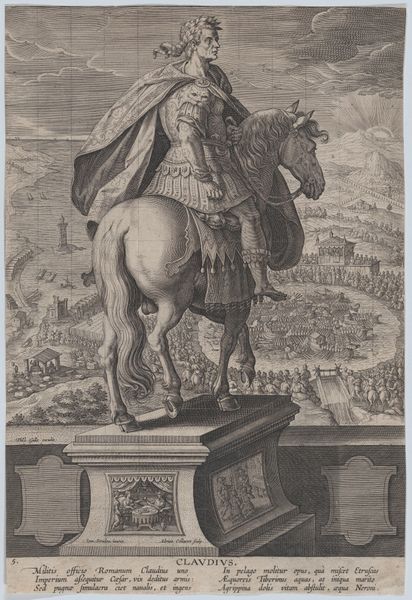
Ruiterportret van Johan Casimir, paltsgraaf aan de Rijn c. 1588 - 1622
0:00
0:00
etching, engraving
#
portrait
#
etching
#
old engraving style
#
caricature
#
11_renaissance
#
history-painting
#
engraving
Dimensions: height 391 mm, width 300 mm
Copyright: Rijks Museum: Open Domain
This engraving portrays Johan Casimir, Count Palatine of the Rhine, made by Jacques Granthomme. The dominant motif is the equestrian portrait, a symbol of power and nobility since antiquity. Casimir, mounted on a rearing horse, embodies the ideal of the ruler: courageous, commanding, and in control. This image echoes the Roman equestrian statues, where emperors like Marcus Aurelius were depicted on horseback to project their authority. The rearing horse itself is not merely a symbol of power; it also conveys a sense of dynamism, energy, and even aggression. Yet, its appearance in art is not always one of conflict. Consider, for example, the horses of Saint Mark's Basilica in Venice, which represent triumph and glory. Such motifs tap into our collective memory, resonating with the psychological archetype of the hero. The Count Palatine, like those figures of old, presents himself as a leader, a protector, and a figure to be admired. The image evokes feelings of awe and respect, drawing on the deeply ingrained human fascination with power, leadership, and heroism. It is a symbol of the enduring human desire for a strong, capable leader. The rearing horse motif is a powerful force engaging viewers on a deep, subconscious level. This symbol follows a cyclical path through history, reappearing in diverse contexts. It carries with it echoes of the past, transformed and reinterpreted to fit the needs and values of each new era.
Comments
No comments
Be the first to comment and join the conversation on the ultimate creative platform.
